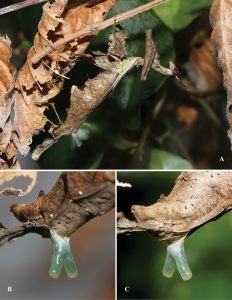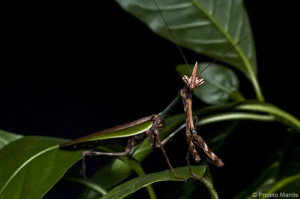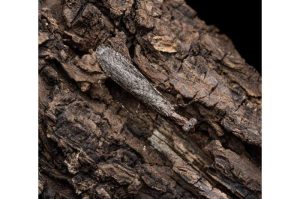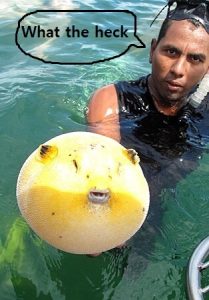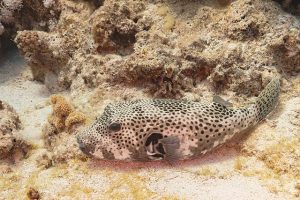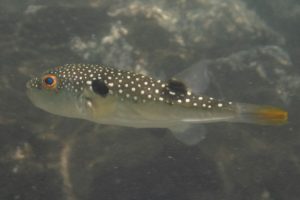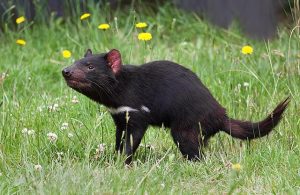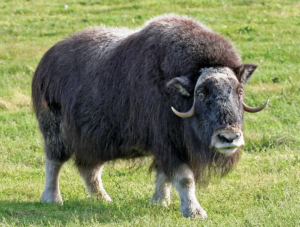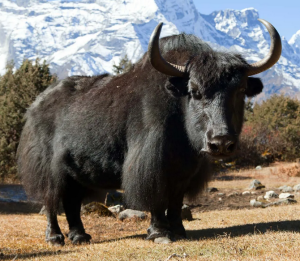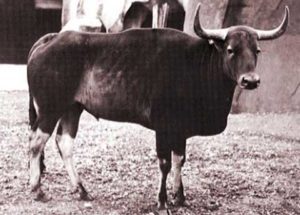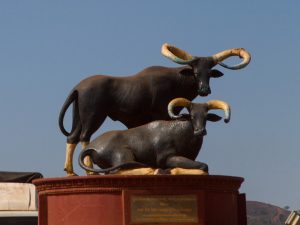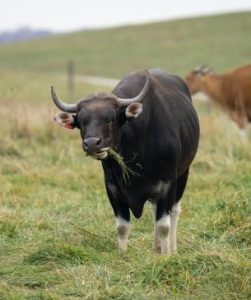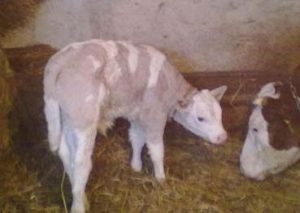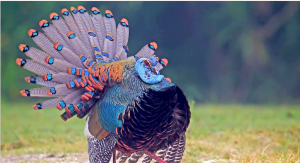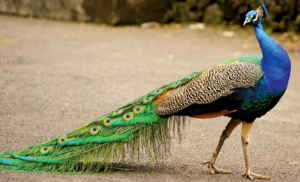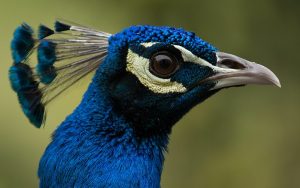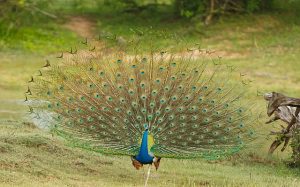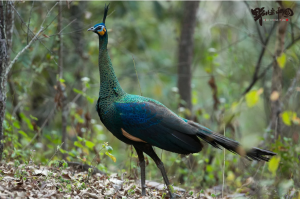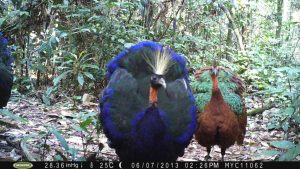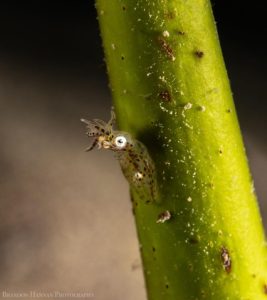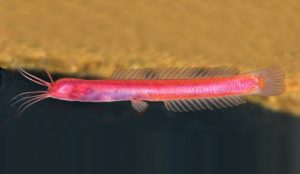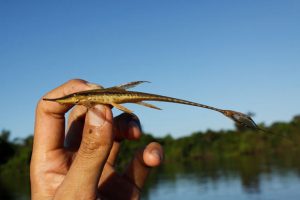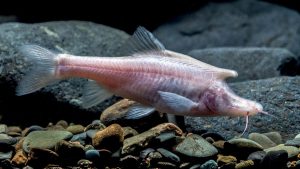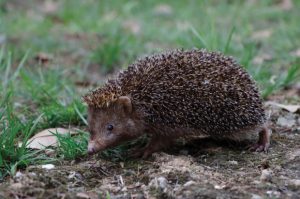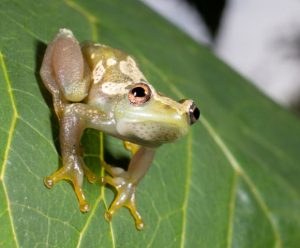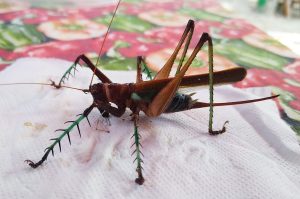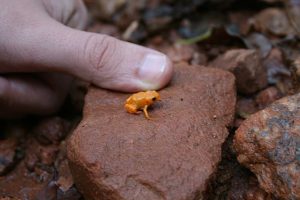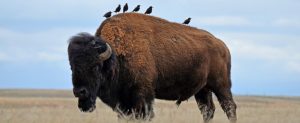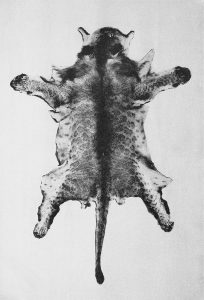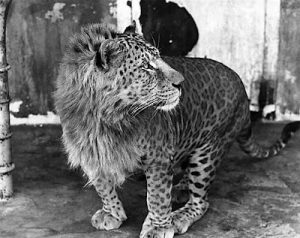Podcast: Play in new window | Download (Duration: 9:51 — 11.0MB)
Thanks to Khalil for suggesting the horny toad, also called the horned lizard or horned toad!
Further reading:
The Texas horned lizard:
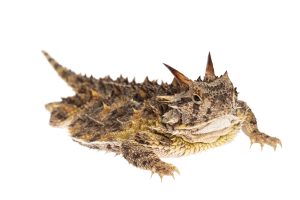
Texas Horned Lizard (Phrynosoma cornutum)
The rock horned lizard [photo taken from article linked above]:
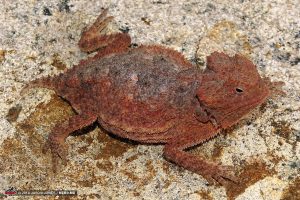
Show transcript:
Welcome to Strange Animals Podcast. I’m your host, Kate Shaw.
This week we’re going to learn about a reptile suggested by Khalil, who is Leo’s friend, so a big shout-out to both. Khalil wants to learn about the horny toad, also called the horned toad or horned lizard.
We talked about it briefly back in episode 299. The horny toad is actually a lizard that lives in various parts of North America, especially western North America, from Canada down through much of the United States and into Mexico. The largest species is the Texas horned lizard, with a big female growing about 5 inches long, or almost 13 cm, not counting its tail.
The horny toad does actually resemble a toad in some ways. Its body is broad and rounded and its face has a blunt, froglike snout. Its tail is quite short. It’s also kind of sluggish and spends a lot of time just sitting in the sun, relying on its mottled coloration to camouflage it. If it feels threatened, it will actually just freeze and hope the predator doesn’t notice it. It’s covered with little pointy scales, and if a predator does approach, it will puff up its body so that the scales stick out even more and it looks larger. It also has true horns on its head, little spikes that are formed by projections of its skull, and if a predator tries to bite it, the horny toad will jerk its head up to stab its horns into the predator’s mouth.
Horny toads mainly eat a type of red ant called the harvester ant. The harvester ant is venomous but the horny toad is resistant to the venom and is specialized to eat lots and lots of the ants. Its esophagus produces lots of mucus when it’s eating, which collects around the ants and stops them from being able to bite before they die.
Because it eats so many venomous ants, many scientists think the horny toad stores some of the toxins in its body, especially in its blood. Its blood tastes especially bad to canids like coyotes that are common in the areas where it lives. But it does the horny toad no good to have bad-tasting blood if a predator has to bite it to find out, so the horny toad has a way to give a predator a sample of its blood in the weirdest way you can imagine.
If a horny toad is cornered by a predator and can’t run away, and puffing up isn’t helping deter the predator, the lizard has one last trick up its sleeve. It increases the blood pressure in its head by restricting some of the blood vessels carrying blood back to the heart, and when the blood pressure increases enough, it causes tiny blood vessels around the eyelids to rupture. It doesn’t just release blood, it squirts blood up to five feet away, or 1.5 meters. As if that wasn’t metal enough, the horny toad can aim this stream of blood, and it aims it right at the predator’s eyes.
Imagine for a moment that you are a hungry coyote. You’re young and don’t know that horny toads taste bad, you just know you’ve found this plump-looking lizard that doesn’t move very fast. It keeps puffing up and looking spiky, but you’re hungry so you keep charging in to try and grab it with your teeth in a way that won’t hurt your tongue on those spikes. Then, suddenly, your eyes are full of lizard blood that stings and makes it hard to see, and the blood drips down into your mouth and it tastes TERRIBLE. It doesn’t matter how hungry you are, this fat little lizard is definitely off the menu. Meanwhile, the horny toad is fine.
Scientists aren’t sure if every species of horny toad can squirt blood. Some species probably can’t, while some do it very seldom. It also doesn’t help against some predators, like birds, who don’t have a great sense of taste and aren’t affected by the toxins in the horny toad’s blood.
The horny toad relies on the harvester ant for most of its specialized diet, although it does eat other insects too. It can’t survive without eating harvester ants. The problem is, the harvester ant is in decline after fire ants were introduced to North America from South America. The horny toad doesn’t eat fire ants, and the fire ants out-compete the local harvester ants, leaving the horny toad with less and less food.
Humans really don’t like fire ants, which can cause damage to homes when they dig their huge underground nests, and which inflict really painful bites. When people try to get rid of fire ants, sometimes the treatments also kill harvester ants. Incidentally, some animals that really love to eat fire ants include armadillos, black widow spiders, wolf spiders, and bobwhites.
The Texas horned lizard lives throughout a fairly large range, so although its numbers are in decline along with its ant food, it’s still doing okay for now. But not every horny toad is so lucky.
The rock horned lizard, also called Ditmars’ horned lizard, is only found in one small part of Sonora in northern Mexico. It was first discovered by science in 1891, when an archaeological expedition caught one. The lizard was described in 1906 but by then it hadn’t actually been seen in the wild since 1897, when two more were caught by a man who donated them to the New York Zoological Park. Those were the only three specimens that had ever been collected. Herpetologists worried that the rock horned lizard had gone extinct.
The main issue was that no one was exactly sure where those three specimens had been collected and no one knew exactly where the 1891 expedition had traveled. The man who caught the two lizards in 1897 didn’t say exactly where he’d caught them, just that it was in northern Sonora. But what a scientist named Vincent Roth realized when researching the lizard is that the three preserved specimens probably still contained undigested and partially digested food in their bodies, and that if the insects the lizards had eaten could be identified, it could give an important clue as to where the lizards had lived.
Dr. Roth requested that the gut contents be removed from the 1891 specimen for study, and also from one of the 1897 specimens. The third specimen had been taxidermied and the guts discarded. Dr. Roth cleaned the gut contents with alcohol and examined them microscopically, and found the remains of 14 insects, the seeds of three different species of grass, and some pebbles. All this happened in 1970, so instead of emailing a bunch of experts for help, Dr. Roth had to write physical letters to specialists throughout the world for help identifying the insects.
The specialists were happy to help, and they determined that the pebbles and grass seeds would have been eaten by accident when the lizard slurped up ants carrying them. The lizards had the remains of several different ants in their digestive tracts, including harvester ants, along with weevils, jumping spiders, grasshoppers, and other insects. These were identified, including some rare ones only ever found in certain areas of Sonora. Even the grass seeds and the pebbles were identified.
It all pointed to a particular mountain range in northern Sonora, and an expedition was arranged by Dr. Roth to search for the lizard. But they didn’t find it! They made plans to return, but asked the local people to keep an eye out for a specific type of horned lizard. In 1971 a report came of a rock horned lizard discovered by a local, followed soon by a few others. The lizard was safe, although it’s rare. Scientists had just been looking in the wrong place for it.
Since the rock horned lizard is only a few inches long and blends in so well with its surroundings, it’s no wonder it was hard to find. Fortunately it’s been rediscovered so that scientists can study it and keep it safe. The next step is to keep the harvester ants safe so that all the horny toads have plenty of yummy ants to eat.
You can find Strange Animals Podcast at strangeanimalspodcast.blubrry.net. That’s blueberry without any E’s. If you have questions, comments, or suggestions for future episodes, email us at strangeanimalspodcast@gmail.com. We also have a Patreon at patreon.com/strangeanimalspodcast if you’d like to support us for as little as one dollar a month and get monthly bonus episodes.
Thanks for listening!
